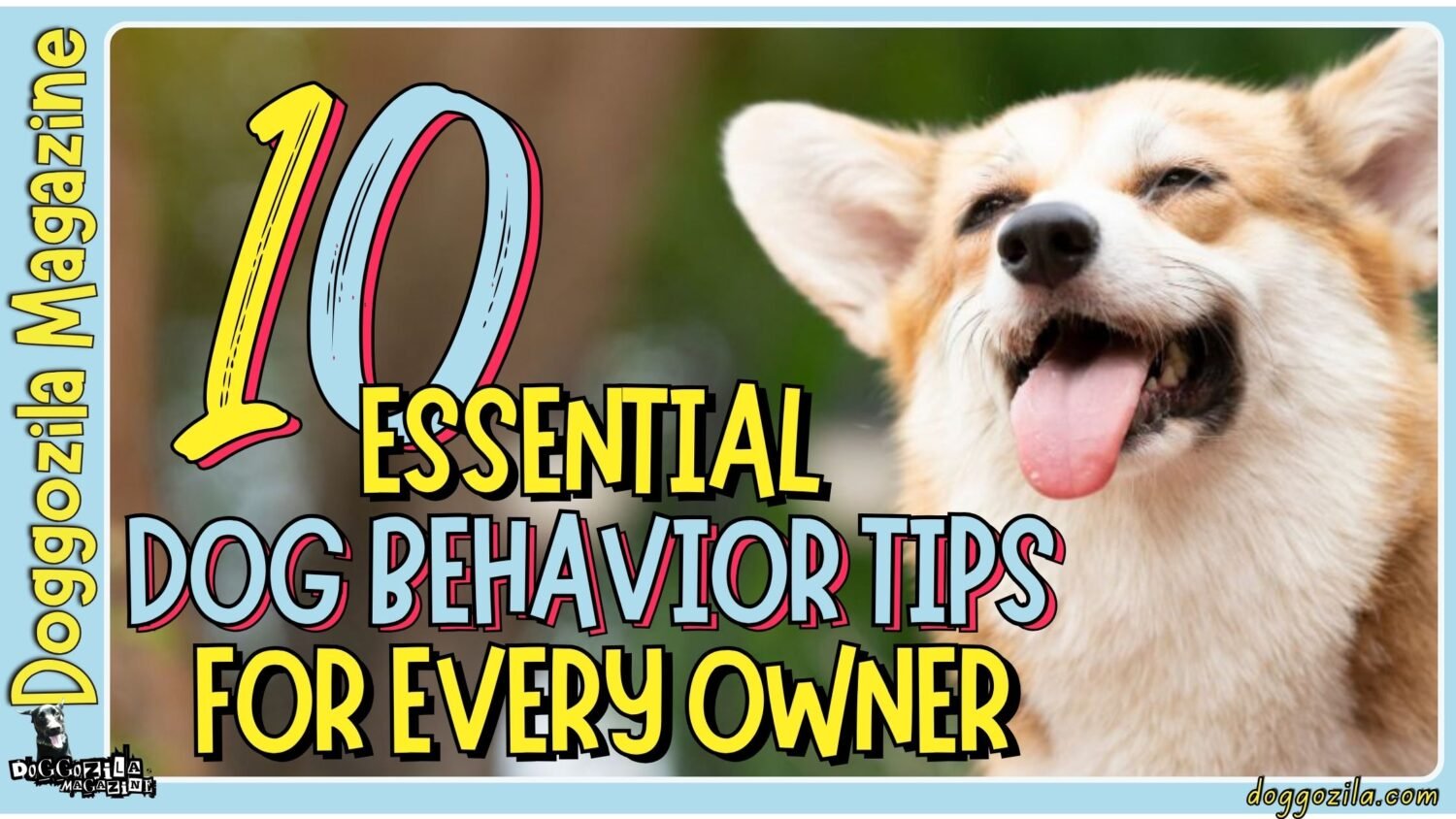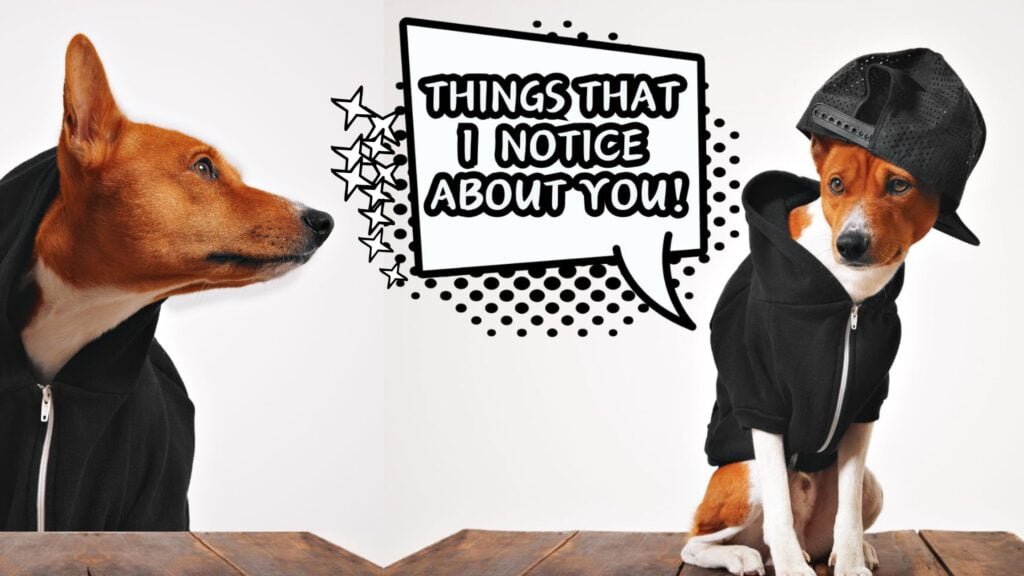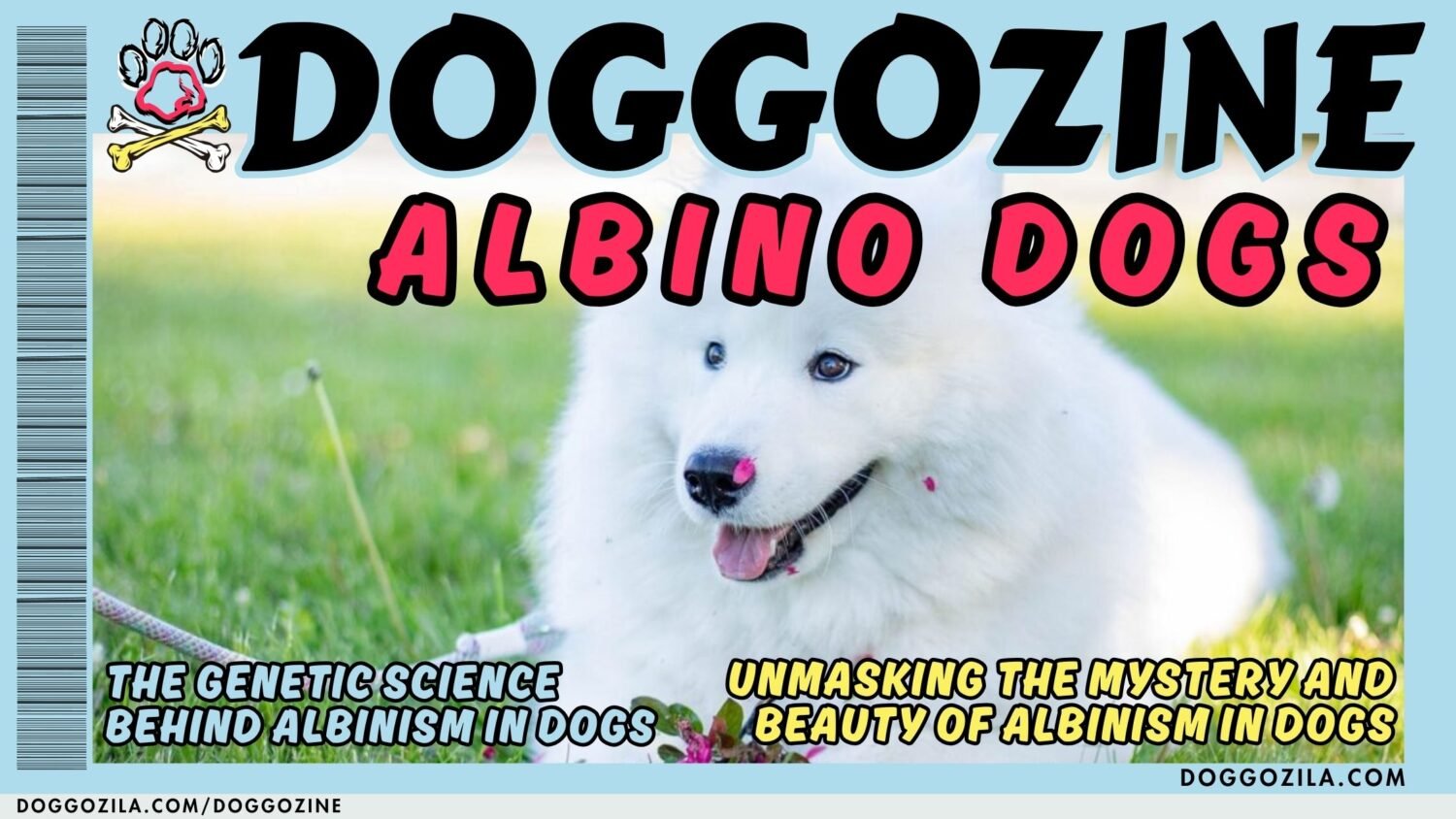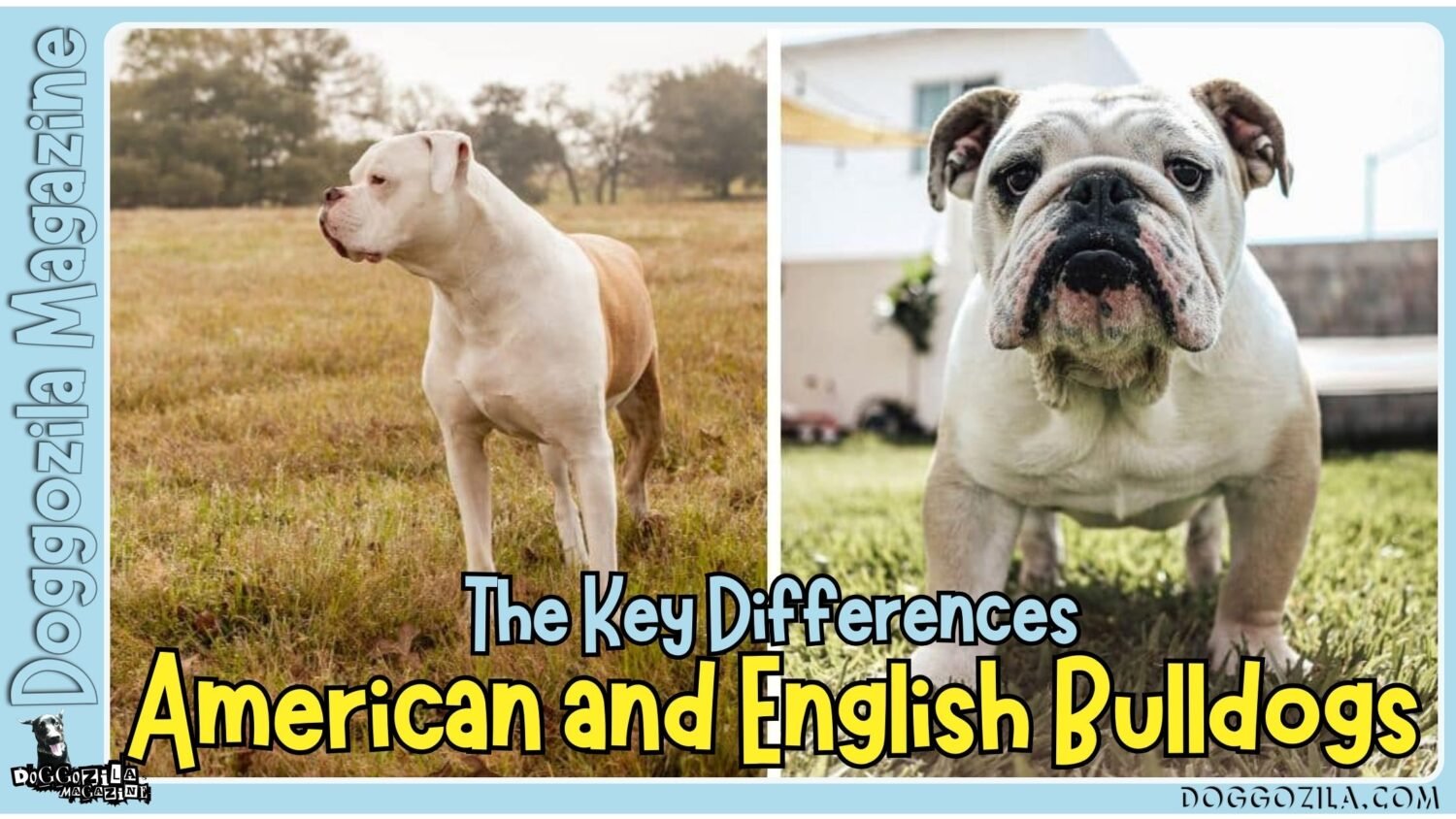We’ve all seen those heart-melting videos of dogs balanced perfectly on their hindquarters, paws tucked daintily, looking like regal squirrels begging for treats. But to teach your dog how to “sit pretty” and pose, isn’t just this adorable Instagram moment, it’s a powerhouse exercise that builds core strength, sharpens focus, and deepens your bond.
Many dog trainers and dog paw-rents witnessed how this trick transforms timid pups into confident performers and unruly adolescents into attentive partners. Let’s ditch outdated dominance myths, modern science proves force-free training creates joyful, resilient companions. With studies suggesting most behavioral issues stem from under-stimulation, tricks like this serve as preventative medicine for the dog soul.
Ready to unlock your dog’s inner gymnast?
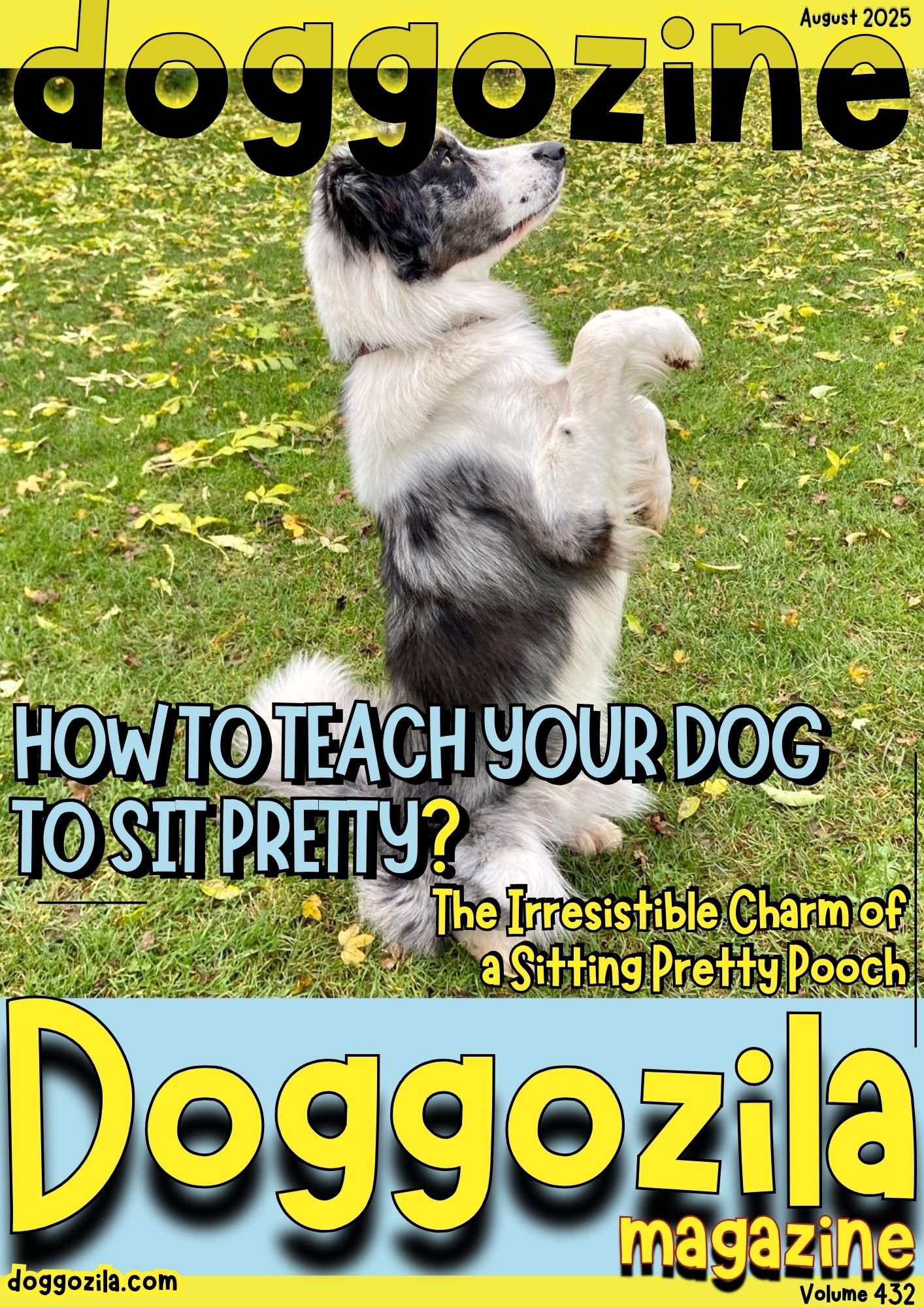
HOW TO TEACH YOUR DOG TO SIT PRETTY WITH CONFIDENCE AND CORE STRENGTH
Before you begin training, you need to understand that this fun beg trick builds balance, coordination, and a deeper connection with your pup. Giving attention to your dog’s core stability is the secret ingredient that keeps even squirmy breeds like French Bulldogs steady on their haunches.
We’ll explore how simple body awareness exercises can increase hind leg power and prevent wobbling. By the end of this section, you’ll see why strength training is just as vital as the verbal cue when teaching sit pretty.
Principles of Proper Posture for Building a Strong Core in Your Dog
Teaching your dog to stack muscles correctly starts with a mindful approach to posture, and most dogs whether energetic Labradors or nimble Greyhounds will surprise you with how quickly they adapt. You’ll learn to spot when your dog is shifting weight onto one side or leaning forward, which can lead to early fatigue or tipping over during the sit pretty trick.
Observing from the side, you want the spine straight, hips level, and chest open as the dog rises onto its hindquarters. When you correct slight tilts or uneven weight distribution, you help your dog engage abdominal muscles that improve overall balance. This posture awareness also reduces the risk of strain for senior dogs whose joints need extra care.
Ever notice how service dogs demonstrate incredible stability? Their training often begins with the same principles of posture awareness that we’ll apply to sit pretty. Once your pooch masters a solid hold for a few seconds, you can gradually extend the duration, making that cute “beg” both strong and stunning.
Environmental Setup Essentials for Beginner Training Sessions
Before diving into treats and lures, set up a distraction-free zone that mimics video tutorials from top trainers but tailored to your living room space. Your dog will feel more confident when there aren’t barking neighbors, squeaky toys, or kids running around pulling attention away from your cue.
A rubber mat or non-slip surface beneath your dog prevents sliding, especially for breeds with short legs or floppy ears that can knock things over unexpectedly. Make sure you have a handful of bite-sized, high-value treats like freeze-dried liver or tiny bits of cheese work wonders.
Position yourself at the same height as your dog’s head so your lure movements are easily seen without forcing your dog to strain its neck. Even a quick video check from your phone can help you see if your angle is right. This intentional setup sets the stage for consistent progress without stress on both ends of the leash.
Step-by-Step Guide on How to Teach Your Dog to Sit Pretty Safely
First, have your dog sit in a comfortable position and reward every correct “sit” to reinforce the base command. Next, position a treat just above the tip of their nose and slowly raise it upward so your dog naturally lifts its front paws off the ground.
As soon as you see those paws leave the floor, mark the moment with a clicker or a verbal “Yes!” and reward immediately. Keep the movement small at first, raising too high can cause lean-back that feels unsafe. Over successive repetitions, you’ll lift the treat higher, encouraging your dog to maintain that two-legged balance.
Be mindful of small breed models like Yorkies and Dachshunds, whose shorter backs can fatigue quickly, shorter sessions with more rest break cycles will work best. And always finish on a high note, letting your dog relax into a normal sit or lie-down once the trick session ends.
🔑 Key Points: Teaching your dog to “sit pretty” isn’t just a cute trick, it enhances core strength, focus, and the bond between you and your dog, transforming timid pups into confident performers.
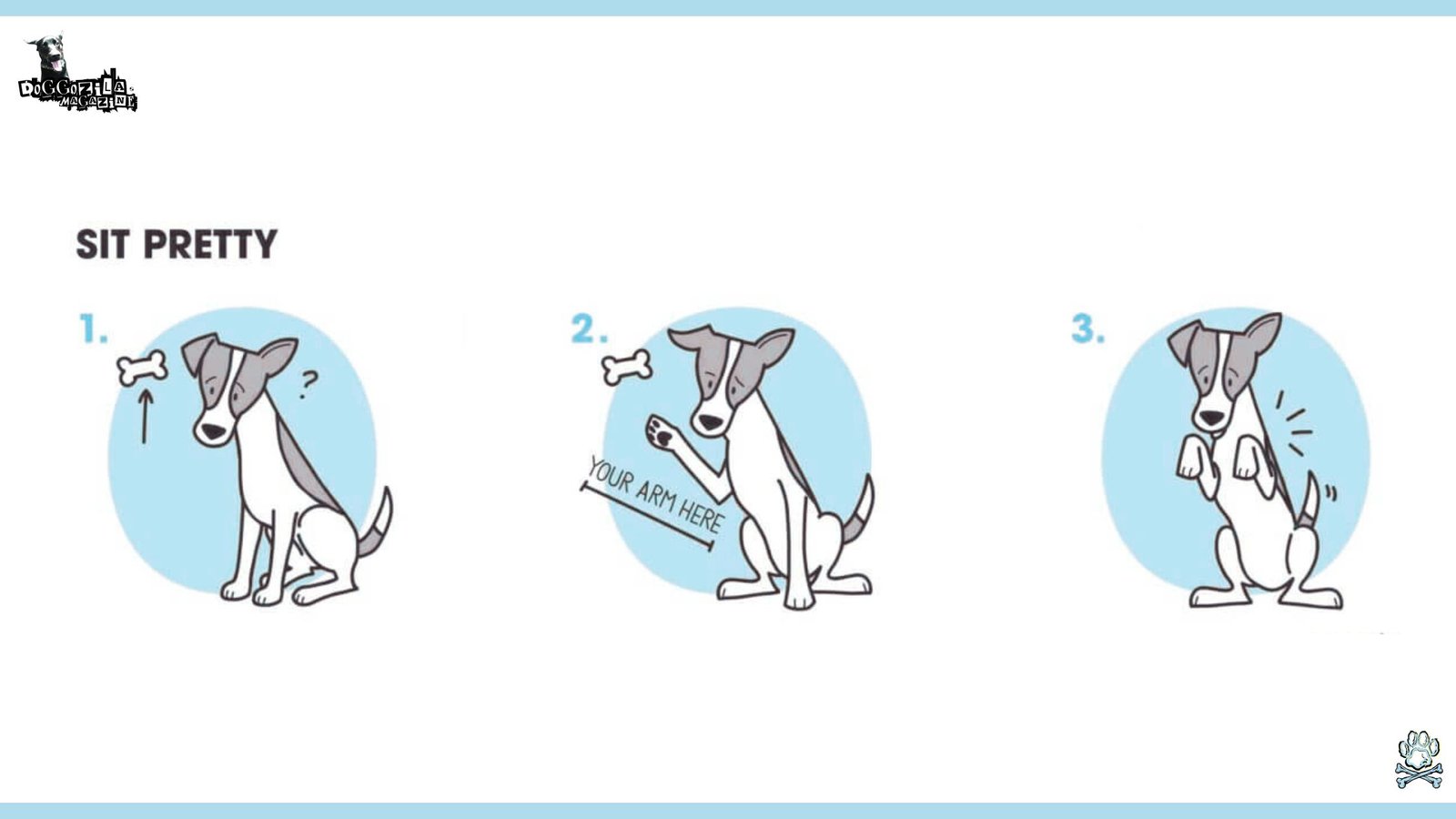
HOW TO TEACH YOUR DOG TO SIT PRETTY: LURING TECHNIQUES THAT ACTUALLY WORK
Not all lures are created equal, and we’ll show you how to adapt strategies for big, floppy ears and flat faces alike. From using your hand as a guide to introducing small training wands for shy pups, these luring methods can be customized for any size, shape, or energy level.
You’ll discover how to transition from food lures to empty-hand targeting so your dog moves on verbal cues alone. By blending lure and shaping techniques, even a five-month-old puppy can master sit pretty in a matter of days with consistent practice.
Choosing High-Value Treats and the Right Lure Shape
High-value treats like those morsels your dog literally races to the treat jar for make or break the lure phase. Think small bites of chicken, tiny freeze-dried salmon pellets, or store-bought jerky snapped into pea-sized pieces.
The lure shape matters, too: you want a flat palm that allows the dog to see the reward clearly without blocking its vision. If your dog starts pawing at your hand instead of rising up, switch to a narrow, spoon-like lure tool that gives more subtle guidance.
Always adjust portion sizes so each session contains no more than a teaspoon of food per repetition, avoiding digestive upset. Rotate treat types to prevent boredom, one day liver-flavored, the next cheese. This variety keeps your dog attentive, curious, and eager to continue learning.
Body Language Cues That Prompt the Beg Behavior
Your body posture and hand motions are just as crucial as the treat itself when luring a sit pretty. Stand tall with shoulders relaxed so you don’t inadvertently lean forward and trigger a normal sit instead of the beg position. Sweep your hand in a slow arc from the dog’s nose up and slightly back, creating a natural weight shift that lifts the shoulders. Keep your elbow close to your side to prevent wild, distracting gestures.
If your dog is impatient and lunges, pause the hand movement for a beat before trying again, teaching patience alongside precision. Over time, your pup associates that calm upward hand sweep with the “sit pretty” request. You’ll often see trainers on YouTube demonstrating Zak George’s method, but fine-tuning these details to your dog’s unique pace is what creates lasting success.
Timing and Reward Schedules When You Teach Your Dog to Sit Pretty
Precise timing ensures the dog links the behavior of lifting their paws with the reward, rather than the default action of returning to a normal sit. Initially, reward every correct bit of progress, if the paws lift an inch, that’s a win we click for.
As your dog gains confidence, transition to a fixed-ratio schedule, rewarding every third or fourth correct sit pretty to build endurance. Sprinkle in variable-ratio rewards later to sustain enthusiasm and mimic slot-machine-style reinforcement that keeps your dog guessing.
Keep sessions short, five minutes of sit pretty training followed by a play break prevents muscle fatigue and mental burnout. Track your dog’s progress in a small training journal, note which days yielded the best hold times and which breeds (like Greyhounds) may need extra pauses. This methodical approach fuels consistent growth and avoids common pitfalls.
Adapting Lure Techniques For Breeds Like French Bulldogs With Brachycephalic Challenges
Flat-faced breeds often struggle with head tilting when following high lures, so you’ll need to adjust the angle and height to match their line of sight. Instead of raising the lure above their nose, position it slightly in front so they don’t overextend and risk tracheal strain.
For bulldogs whose hindquarters feel less stable, add a cushioned support under the thighs, like a rolled towel, during the earliest reps. Keep individual repetitions to three or four to avoid overtaxing their breathing, and always include a cool-down in a shady, well-ventilated spot.
Use the absolute lowest height that still prompts the lift, even a five-centimeter raise can trigger the correct muscle activation. Watch for signs of hiccupping or excessive panting, which means it’s time to pause. This breed-specific sensitivity ensures your dog learns comfortably and safely.
🔑 Key Points: Correct posture (straight spine, level hips, open chest) ensures your dog engages the right muscles, prevents fatigue, and reduces strain, especially important for senior dogs.
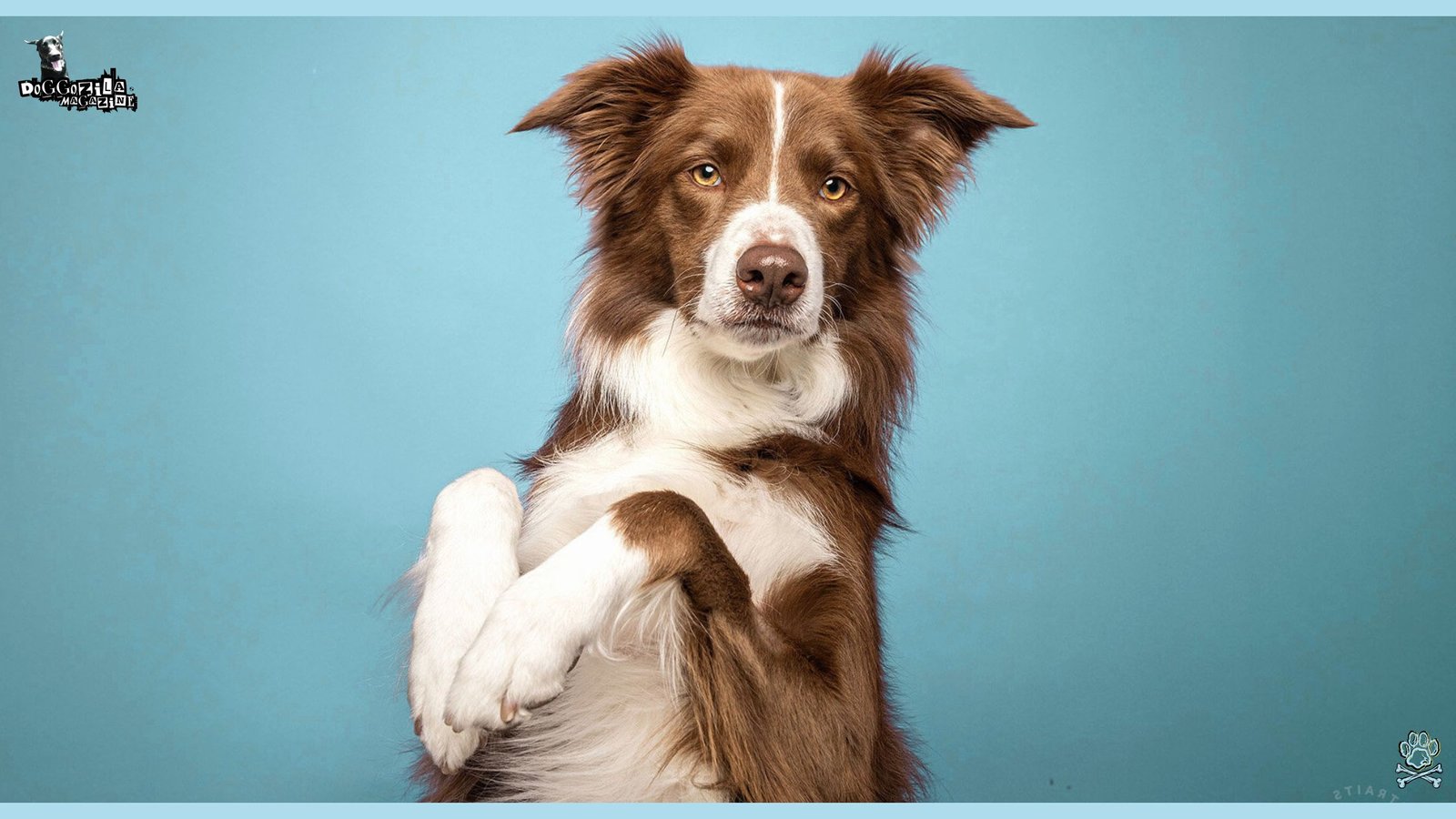
HOW TO TEACH YOUR DOG TO SIT PRETTY USING CLICKER TRAINING AND POSITIVE REINFORCEMENT
Clicker training introduces a precise marker for your dog, bridging the gap between the behavior and the reward with a crisp sound. When you click at the exact moment your dog’s paws leave the ground, they learn to repeat that action faster than you can say “good dog.”
Coupled with positive reinforcement, this method can accelerate success in puppies as young as eight weeks and adult rescues alike. We’ll cover how to phase out treats gradually so your dog eventually responds to voice cues alone.
Related Article Recommendation: Clicker Training for Dogs: How to Start to Use the Click?
The Science Behind Clicker Training for Precise Dog Trick Teaching
Clicker training leverages Pavlovian conditioning, where the click becomes a conditioned reinforcer that promises a treat is coming. It’s like adding a bookmark at the exact point you want to highlight in a book, your dog knows precisely which movement earned the reward.
Researchers at the University of Lincoln found that dogs trained with clickers mastered new behaviors up to 20 percent faster than those using verbal markers alone. This efficiency is invaluable when teaching dynamic tricks like sit pretty, where timing errors can lead to frustration.
Clickers also reduce human reaction time variability, standardizing your cues across training sessions. As your dog grows more reliable, you can sprinkle in social rewards like scratch behind the ears, a short play session, or even a squeaky toy. This multisensory reinforcement builds an unshakable bond and ensures your dog stays excited throughout the process.
Designing a Feedback System to Reinforce How to Teach Your Dog to Sit Pretty at Home
An effective feedback system is more than a click or treat, it’s a holistic framework of rewards, rest, and progression maps. Start by drawing a simple chart listing daily benchmarks, one-second hold on day one, two seconds on day two, and so on. Use color-coded stickers to mark each success, motivating you as much as your dog.
Schedule sessions around your dog’s natural activity peaks, like mid-morning or late afternoon, avoiding post-walk fatigue or evening distractions. Rotate reinforcement types every other session like food, play, affection to maintain novelty. If your dog stalls, introduce a mini-game like tossing a ball sideways, then return to sit pretty to reset enthusiasm. This system lets you track subtle improvements and adapt on the fly, turning every training day into a mini-adventure.
Avoiding Common Pitfalls in Positive Reinforcement Sessions for Sit Pretty
One of the biggest mistakes is overloading your dog with treats, which can lead to decreased motivation or unwanted weight gain. Keep sessions bite-sized and always adjust daily food portions to account for training treats.
Another pitfall is repeating the cue too many times without success, which can erode the dog’s confidence. If your pup freezes or turns away, take a step back to an earlier training stage, perhaps simply reinforcing a proper “sit” again.
Avoid escalating tension by cutting sessions short once your dog shows signs of frustration, such as yawning or refusing eye contact. Lastly, be mindful of your own body language, dogs are masters of reading human signals and will pick up on stress. By dodging these traps, your sit pretty journey remains joyful and effective.
Customizing Cues and Props When You Teach Your Dog to Sit Pretty in Busy Environments
Training in a quiet living room works wonders, but real-world success demands adaptation to unpredictable settings, like dog parks or bustling city sidewalks. Start by practicing next to a low-traffic curb, rewarding your dog for even a momentary lift before gradually moving closer to more distractions.
Implement portable props like lightweight hula hoops or training cones to designate a “safe zone” for your dog to focus on the trick. Keep a small pouch of ultra-high-value treats like freeze-dried liver or tiny hotdog pieces to recapture attention when street noise escalates.
Use a secondary verbal cue, like a whispered “up,” when you can’t click or show your hand lure clearly. Always reward calm behavior first if your pup is sniffling or barking, reinforce a quiet sit before asking for sit pretty again. This approach ensures the trick remains reliable, even amid the most Instagrammable chaos.
🔑 Key Points: Clicker training speeds up learning by precisely marking desired behaviors, with studies showing dogs master tricks 20% faster compared to verbal cues alone.
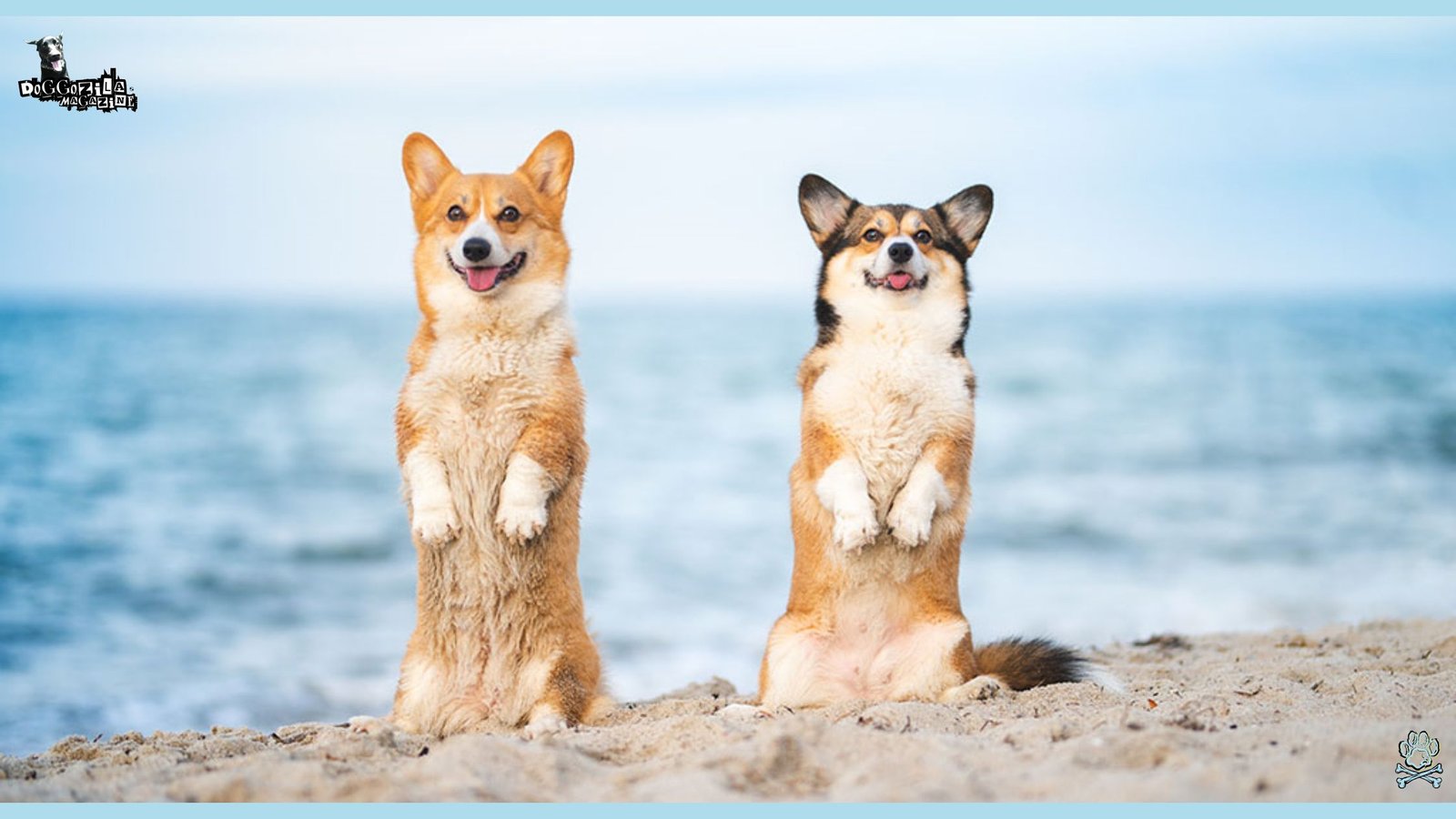
HOW TO TEACH YOUR DOG TO SIT PRETTY: MODIFYING EXERCISES FOR SMALL BREED MOBILITY AND HIND LEG STRENGTH
Small breeds like Corgis, Chihuahuas, and toy Poodles have unique body proportions that require thoughtful modifications to any balance trick. By tailoring hold times and implementing specialized exercises such as elevated sit-to-stand movements you can safely develop their hind leg muscles.
Gentle stretching before and after each session helps prevent cramping and supports joint health. We’ll dive into breed-specific adaptations so that every dog, regardless of stature, masters sit pretty with grace.
Modifying Exercises for Small Breed Mobility and Hind Leg Strength
When working with toy and miniature breeds, reduce repetition counts to prevent muscle strain and joint stress. Incorporate low-impact exercises like sit-to-stand drills on a soft mat before introducing the sit pretty lift. Use body massage or gentle range-of-motion stretches to warm up the hips and knees, simulating warm-up routines used in dog sports therapy.
Elevate tiny dogs onto a stable platform just a few inches off the ground so they can practice the beg posture safely. Integrate short play sessions like a couple of minutes of indoor fetch to keep blood flowing to the hindquarters. Monitor for signs of discomfort, such as slowed movement or trembling, and adjust accordingly. This customized approach ensures that even the smallest fluffball gains strength and confidence at its own pace.
Senior and Puppy Considerations in How to Teach Your Dog to Sit Pretty Gently
Puppies with budding growth plates and seniors with age-related arthritis both need a delicate touch when you introduce a new trick like sit pretty. For puppies, keep sessions under five minutes and focus on muscle memory through very light repetitions.
Incorporate socialization elements such as mild background noise or brief outdoor forays so they generalize the skill early. Seniors benefit from a cushioned surface and more frequent breaks, as their joints don’t recover as quickly after load-bearing exercises.
Always start by reinforcing a solid “sit” or “down” before layering on the beg posture, respecting their need for familiar foundations. Watch for subtle limping or reluctance to stand; if you see it, switch to a low-impact fun nose-work game instead. These age-specific tweaks keep training safe and enjoyable across your dog’s entire lifespan.
Case Study: How a Labrador Retriever Transformed Balance Through Gentle Progression
When a one-year-old Labrador with a history of hip dysplasia was introduced to our sit pretty protocol, the trainer began with assisted holds using a foam wedge under the hips. Over four weeks, the dog progressed from assisted two-second holds to independent five-second balances on a non-slip mat.
Core strength improved so dramatically that the dog began topping agility contacts with greater confidence. The dog’s owner reported that daily sit pretty practice not only enhanced the trick but also reduced signs of stiffness during morning walks. This case illustrates how a careful, incremental approach can produce tangible gains in both trick performance and overall mobility.
🔑 Key Points: Flat-faced breeds (e.g., Bulldogs) need adjusted lure angles, while small breeds (e.g., Chihuahuas) benefit from reduced repetitions and warm-up stretches to prevent strain.
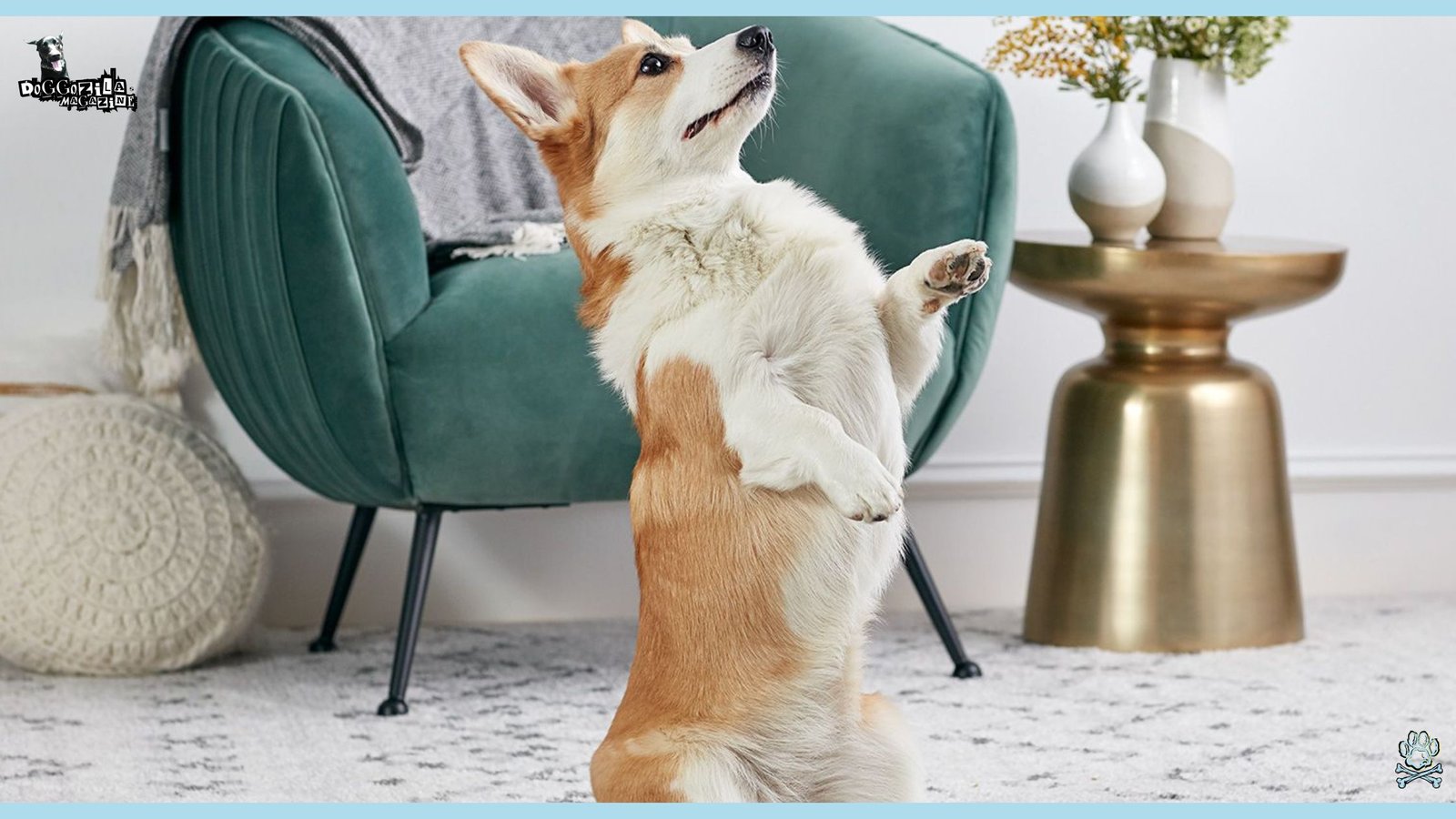
HOW TO TEACH YOUR DOG TO SIT PRETTY: USING SIT PRETTY AS A SERVICE DOG SKILL AND CONFIDENCE BUILDER
Beyond its charming aesthetic, sit pretty is an excellent confidence-building exercise for service, therapy, and emotional support dogs. The trick strengthens back muscles, improves balance, and enhances focus, traits that directly translate to better performance in public settings.
By layering this behavior into obedience routines, handlers can reinforce impulse control and sustained attention. Sit pretty also offers a portable break signal for dogs working in busy hospitals or assisted living facilities.
Related Article Recommendation: Service Dogs Training: Guide Into The Process!
Using Sit Pretty as a Service Dog Skill and Confidence Builder
Service dogs often face long periods of waiting with minimal activity, so sit pretty becomes an active rest that engages their bodies and minds. Practicing controlled holds in a quiet corner of a store or café builds muscle memory for calm endurance.
As the dog masters longer durations, handlers can use sit pretty as a visual signal to bystanders that the dog is “on duty.”This trick also provides cognitive stimulation, reducing stress levels when a dog is expected to remain composed amid unpredictable stimuli.
For therapy dogs, the cute beg posture can be a delightful icebreaker for patients, encouraging gentle interaction and promoting positive emotional states. And because the trick requires shifting body awareness, it deepens the dog’s sense of proprioception, essential for navigating crowded hallways without bumping into furniture or wheelchairs.
Puppy Socialization and Service Dog Foundations in How to Teach Your Dog to Sit Pretty Effectively
Introducing service dog puppies to sit pretty alongside basic obedience commands fosters early focus and impulse control. By pairing the beg posture with short leash holds, puppies learn restraint in a fun, positive way. Early socialization environments like puppy kindergarten classes, quiet parks, or controlled therapy visits help puppies generalize sit pretty across different contexts.
Using sit pretty as a bridge between attention commands and more advanced tasks prevents mental fatigue during longer training sessions. The trick can also serve as a reward, after a successful walk-through or distraction drill, letting the puppy offer sit pretty signals that the session is over. This positive ritual reinforces precision and reliability, traits fundamental to service work.
Including Sit Pretty in Agility and Dog Diving Warm Ups
Sit pretty isn’t just a stationary trick, it’s a functional warm-up exercise that activates core muscles before high-intensity sports. For dogs competing in agility, a three-to-five second hold primes the spinal stabilizers and hip extensors needed for weaving and jumping sequences.
In dog dock diving, a quick sit pretty session before entering the water enhances proprioceptive awareness, helping dogs launch off the dock with perfect alignment. Handlers can incorporate sit pretty between runs as a low-impact recovery move that maintains engagement without overtaxing muscles. This cross-discipline application underscores how versatile and valuable the sit pretty trick can be when integrated into a broader athletic regimen for dogs.
🔑 Key Points: “Sit pretty” strengthens balance and focus, making it valuable for service/therapy dogs by improving impulse control and providing a portable “active rest” signal.

ADVANCED BALANCE EXERCISES AND TIPS FOR DOGS OF ALL AGES
Once your dog masters the basics, it’s time to elevate their challenge with dynamic props and multitask drills. You’ll explore wobble boards, exercise balls, and inflatable cushions that add instability to the beg posture and force the dog to recruit smaller stabilizer muscles.
Combining sit pretty with head turns or light object touches transforms the trick into a true test of simultaneous balance and coordination. This advanced phase boosts both mental focus and muscular endurance in one go.
Progressive Balance Challenges to Enhance Hindquarters Stability
To amplify the core engagement beyond a static sit pretty, place your dog’s hind paws on a gentle incline like a low plank board and ask for the beg posture there. The slight slope makes stabilizing a bigger workout and accelerates strength gains.
Once your dog feels comfortable, introduce a slow head-turn cue while holding sit pretty, reinforcing neural pathways that link vestibular control with muscular contraction. If your dog starts leaning or taking a paw down, reduce the slope or pause head turns until stability improves.
Gradually increase hold duration by one second each session to build muscular endurance without risking fatigue. Mixing in short breaks where the dog simply stands on the device helps reset focus. This systematic progression ensures your dog thrives in advanced sit pretty challenges.
Incorporating Wobble Boards and Exercise Balls to Train Core Balance
Wobble boards creak and shift underfoot, requiring dogs to micro-adjust their weight constantly during the sit pretty posture. Start with the board locked or partially inflated so it feels stable, then slowly unlock it as your dog gains confidence.
Exercise balls add a similar dynamic like placing hind paws on a deflated ball engages proprioceptive receptors that accelerate muscle recruitment. Always supervise these exercises closely and keep support nearby, as even seasoned agility dogs can lose balance unexpectedly.
Sessions should remain brief, no more than two minutes per apparatus and interspersed with floor-level sit pretty holds. Rotate among different tools to prevent overuse of any single muscle group. These advanced tools take sit pretty from a static pose to a full-body workout for your canine athlete.
Creative Games for Core Engagement When You Teach Your Dog to Sit Pretty in an Adventurous Way
Who says training has to be strictly one trick at a time? Turn sit pretty into a treasure hunt, hide small pieces of kibble around the room and ask your dog to sit pretty at different checkpoints before searching. Combine a brief sit pretty hold with a target nose-touch to objects like small cones or toys, keeping the session playful and stimulating.
Use a treat-dispensing puzzle toy that only opens when the dog holds sit pretty for five seconds, merging problem solving with balance work. You might even set up a mini-obstacle course where sit pretty is one of the stations, complete the beg pose, then weave through poles, then back to sit pretty. These inventive combos ensure your dog stays mentally sharp and physically engaged, transforming every training session into a fun adventure.
🔑 Key Points: Progress to wobble boards, exercise balls, or multitasking drills (like head turns during holds) to boost core stability and mental engagement.
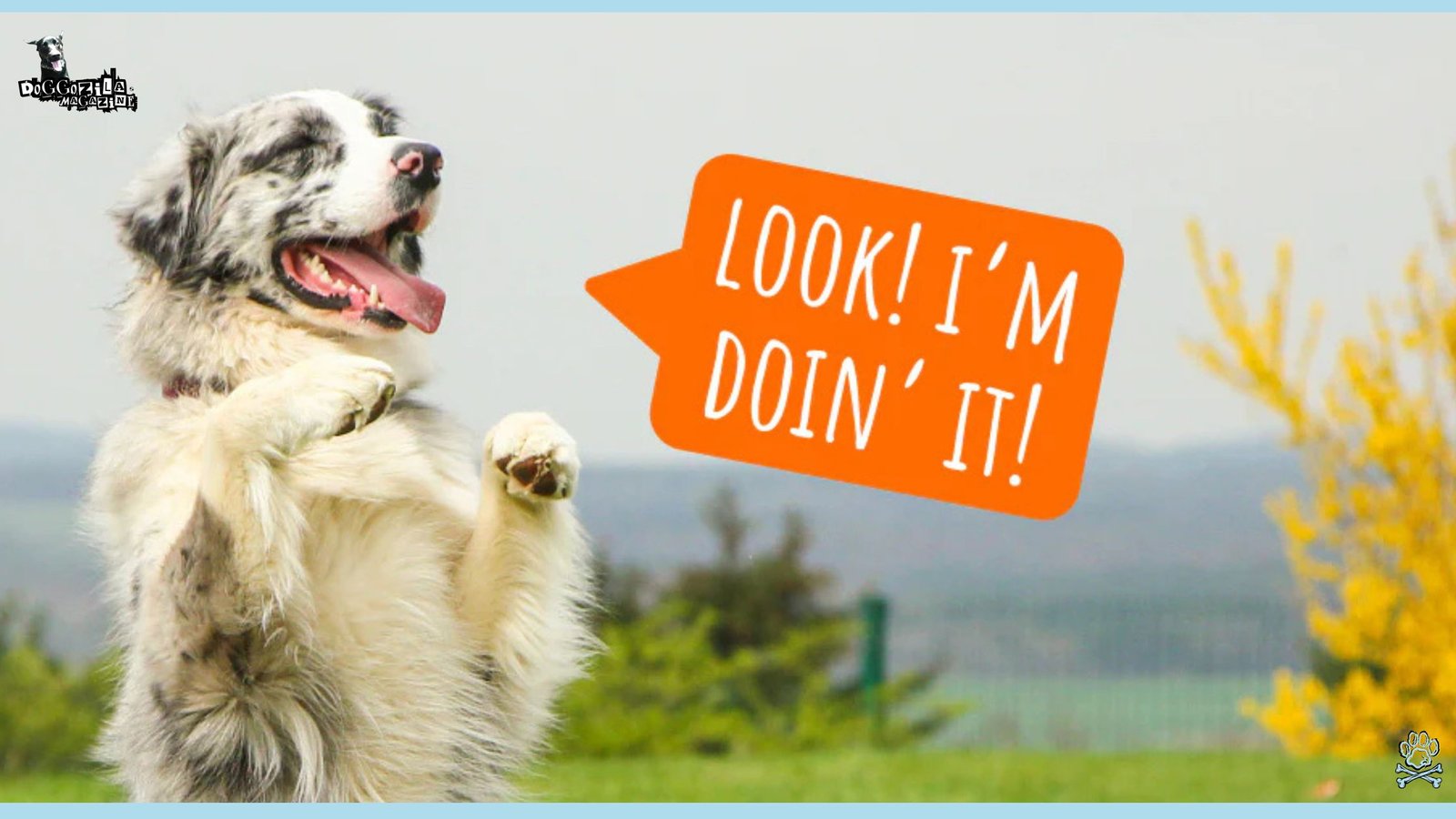
OVERCOMING COMMON CHALLENGES WHEN TRAINING YOUR DOG TO SIT PRETTY
Even the savviest trainers hit roadblocks like dogs that spin instead of rising, those that tip backward, or simply pups that lose interest. We’ll dissect these challenges and offer targeted fixes, like adjusting lure speed, reinforcing front paw alignment, and injecting novelty when motivation dips.
Understanding the root cause, be it strength deficits, lack of clarity around the cue, or environmental distractions is the first step toward a breakthrough. Patience and adaptation will turn every stumbling block into an opportunity for progress.
Troubleshooting Spinning, Slipping, and Tipping Over
When a dog spins out instead of lifting both paws evenly, it’s often because they’re chasing the lure with one front paw. Slow your lure movement and introduce a two-hand approach, one hand as the marker above the nose, the other gently stabilizing the opposite shoulder.
If slipping on hardwood or tile is the issue, switch to a yoga mat or non-slip rug to give paws something to grip. Tipping backward usually means the lure is too high or too far behind; correct by placing it directly above the nose and slightly forward.
For persistent balance issues, break the sit pretty trick into micro-behaviors, rewarding a slight weight shift, then a one-paw lift, then a two-paw lift. Celebrate these incremental achievements to build confidence and control before expecting a full beg hold.
Gradual Height and Hold Duration Adjustments in How to Teach Your Dog to Sit Pretty Securely
Raising the treat too quickly can overwhelm a dog’s vestibular system, causing them to lean back or cut the beg short. Stretch the treat position over days rather than minutes, lift a centimeter higher every other session. Pair each new height with a momentary pause, so the dog learns that holding still at a new level is rewarded.
Transition hold durations by adding just one second at a time to prevent overexertion or frustration. Keep a visible log of height increments and hold times, adjusting based on your dog’s comfort signals like drooping ears, paw shakes, or hurried returns to the floor. This methodical cadence nurtures slow but steady improvement, leading to a rock-solid sit pretty at any height.
Understanding Breed-Specific Obstacles and Solutions for Sit Pretty Success
Different breeds have distinct anatomical and temperament considerations that influence their sit pretty journey. Greysters like Greyhounds may have superb balance but will fatigue quickly if you overtrain, so short, sharp sessions are best.
Heavy-chested breeds such as Bulldogs need extra hip range-of-motion prep through gentle warm-up stretches before lifting. Working breed mixes like Border Collies and Australian Shepherds, often get bored easily, so keep them engaged by pairing sit pretty with a tennis ball toss every third repetition.
Arctic breeds like Huskies may be more prone to paw slipping on warm floors, making non-slip mats a training essential. By recognizing these breed-specific traits, you can customize your approach, ensuring that every dog, regardless of heritage, stands tall and steady in their sit pretty.
🔑 Key Points: Start with small movements, marking and rewarding even slight paw lifts. Gradually increase height and duration while adjusting for breed-specific needs (e.g., shorter sessions for small dogs).
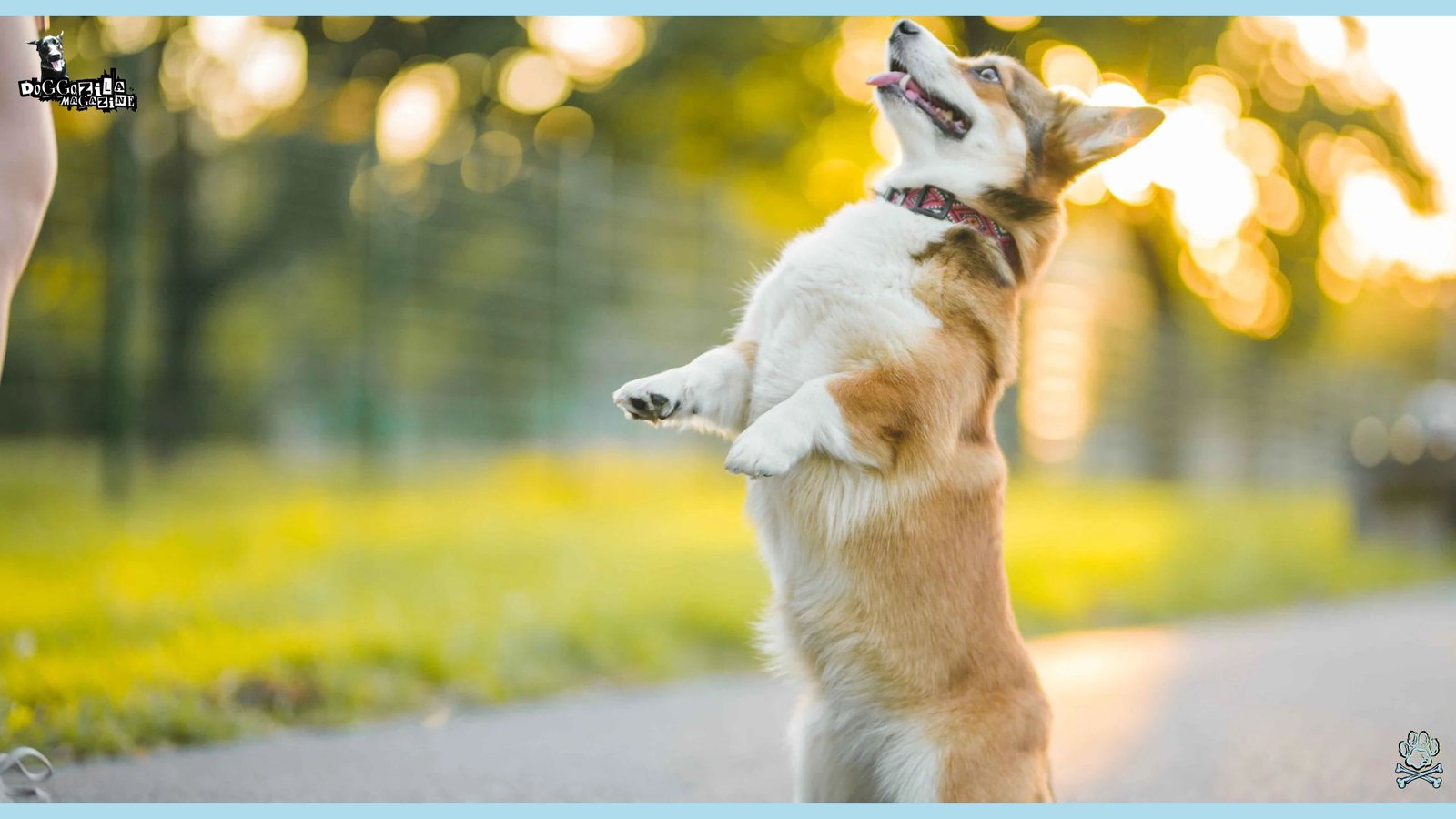
INTEGRATING NEUROSCIENCE AND CASE STUDIES INTO YOUR SIT PRETTY TRAINING
Recent research in canine cognition reveals that dogs anticipate rewards up to three seconds before receiving them, which underscores the importance of precise marker timing in trick training. By weaving these insights into your routine, training transforms from guesswork into a science-backed process.
Neuroscientists at the Max Planck Institute for Animal Behavior showed that dogs form stronger long-term memories when training sessions alternate between high and moderate emotional arousal. This means mixing calm sit pretty holds with short, high-energy fetch breaks can actually cement the trick more deeply.
Insights from a University of Lincoln Study on Canine Core Conditioning
The University of Lincoln’s canine sports science lab tracked muscle activation in dogs performing the sit pretty posture, revealing a 30 percent increase in oblique engagement compared to a standard sit.
This finding suggests that focusing on core conditioning through tricks like sit pretty can have measurable fitness benefits, particularly for dogs prone to pelvic weakness or those rehabbing after orthopedic surgery. The study also noted that retention of the beg trick improved when trainers paired it with a novel cue word every other session, preventing habituation.
Armed with these data points, you can structure your training with varied cues and targeted core exercises for maximum impact. Incorporating a simple routine of sit pretty holds followed by a short walk or play break mirrors the study’s successful protocol. This blend of empirical evidence and practical application ensures your training is both safe and scientifically sound.
Neuroscience Revelations on Reward Anticipation and How to Teach Your Dog to Sit Pretty with Mental Engagement
Dogs exhibit a spike in dopamine release in anticipation of a treat if the interval between cue and reward is consistently short and predictable. However, too much predictability can lead to decreased excitement, so deliberately varying the gap between the click and treat delivery, sometimes 0.5 seconds, other times up to two seconds, and can sustain anticipation.
This neuroscience trick, borrowed from sports psychology, keeps a dog’s brain engaged and their motivation high when you teach your dog to sit pretty with a dynamic reward schedule. Additionally, alternating the type of reinforcer like food, toy, social praise activates different neural pathways, enriching memory consolidation and behavioral flexibility.
Including brief mental puzzles, such as a simple shell game, before a sit pretty cue can boost the dog’s focus and readiness to perform. This fusion of cognitive science and trick training elevates sit pretty from a mere party trick to a comprehensive mental workout that benefits your dog’s overall well-being.
Future Trends in Trick Training and How to Teach Your Dog to Sit Pretty with Emerging Canine Cognition Tools
With wearable pressure sensors now available for dog athletes, trainers can quantify the exact center of pressure during a sit pretty hold, enabling data-driven adjustments to stance and duration. Artificial intelligence apps are also on the horizon, analyzing video of your training sessions to recommend tweaks in hand position or lure timing based on subtle shifts in your dog’s posture.
Virtual reality simulations may soon let dogs experience low-risk practice environments before transitioning to busy real-world scenarios. Even scent-detection integration using aroma cues to prompt sit pretty could become a cutting-edge variation as scent training tools become more mainstream. Embracing these advancements ensures that your dog’s sit pretty remains not just adorable but at the forefront of scientific innovation, keeping training exciting and future-ready.
Our Final Takeaway on How to Teach Your Dog to Sit Pretty While Decoding the Biomechanics
Before luring your pup skyward, understand that “sit pretty” requires sophisticated coordination of core, lower back, and hindlimb muscles while maintaining equilibrium, essentially canine pilates. Breeds with longer spines like Dachshunds may struggle initially, while muscular Bull Terriers often leverage brute strength for balance.
Carefully assess your dog’s physical readiness: Can they hold a basic sit without fidgeting? Do they comfortably tuck their hind legs beneath them?
For seniors or arthritic dogs, modify by letting them rest against a wall or your leg. A folded towel under their haunches provides game-changing stability during early training. This simple tweak helped a twelve-year-old Labrador achieve his first unassisted pretty sit far sooner than expected.
“Training isn’t about commands, it’s about building a dialogue where both hearts feel heard.”
What You Should Remember When You Teach Your Dog How To Sit Pretty?
By blending these carefully structured steps, real-world case studies, and the latest research, you’ll master the art of teaching your dog to sit pretty in a way that’s both scientifically sound and incredibly fun.
Remember to tailor each method to your dog’s individual needs, whether you’re training a playful puppy or a wise senior, and enjoy every moment of this shared adventure. If you’re ready to explore more dog tricks or delve deeper into dog sports, stay tuned for our upcoming articles.
As renowned trainers observe, dogs thrive when understanding their roles in our lives.
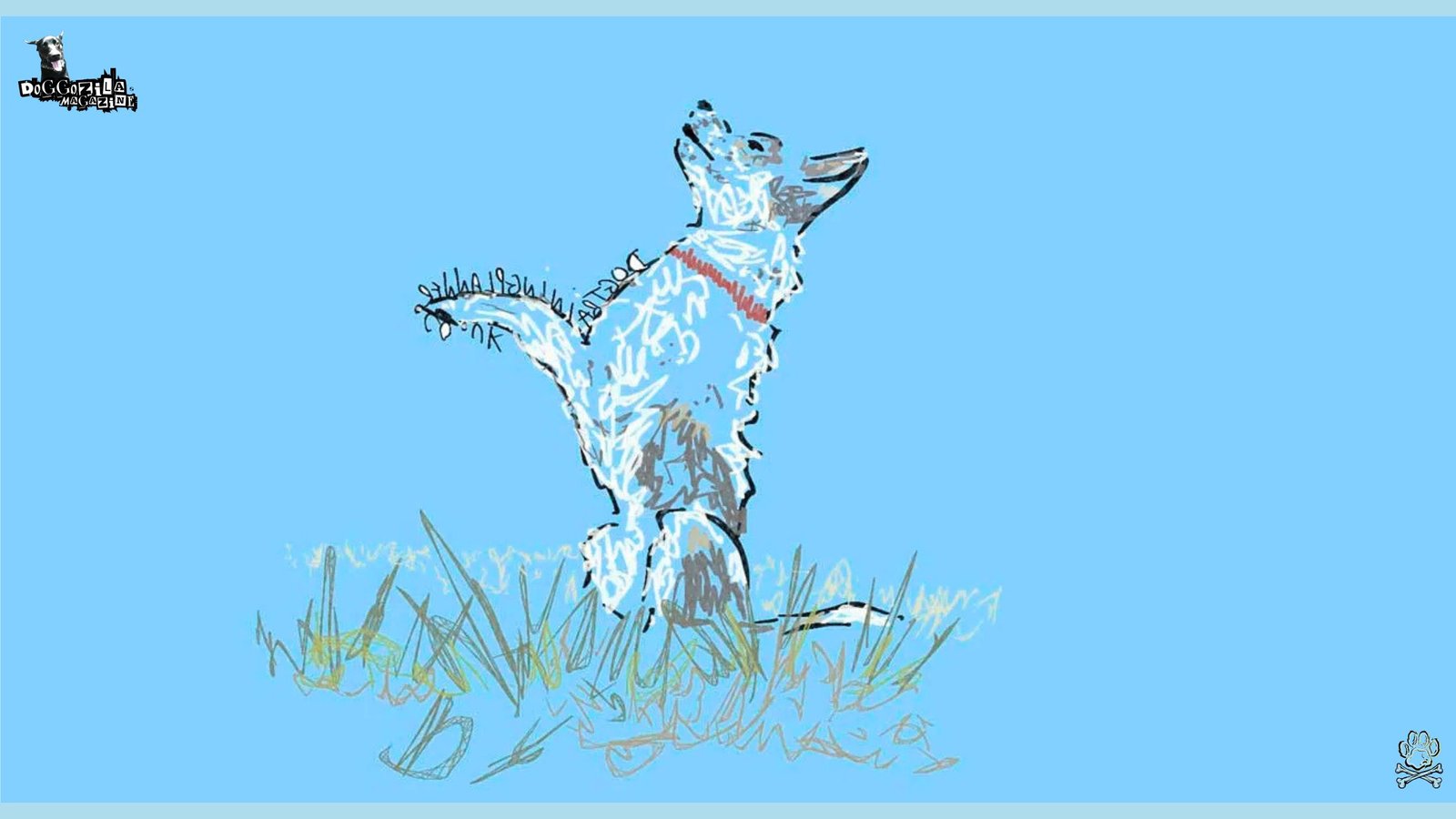
Sit pretty becomes a shared language of trust, a thousand tiny triumphs that echo through your journey together.

